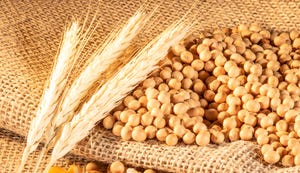
New York Times writer Verlyn Klinkenborg beats an old path to a popular myth these days: Farmers are the tools of corporations, and we only grow the crops they tell us to.
In his article, Did Farmers of the Past Know More than We Do?, Klinkenborg, who writes a regular opinion column about rural living and nature, claims that the only reason the corn-soybean rotation is popular among so many of today's farmers is because those are the crops that corporations have commanded them to grow in order for the corporation to make more money selling chemicals and fertilizer.
Klinkenborg writes, "The very structure of the agricultural system, as it stands now, is designed to return the greatest profit possible, not to the farmers but to the producers of the chemicals they use and the seeds they plant."
Klinkenborg must have missed the USDA-ERS report on how farm incomes have continually achieved record highs in recent years. Net farm income doubled in just the last three years to $122.2 billion in 2012, up from $63.0 billion in 2009. If farmers are mindless tools of corporations as Klinkenborg implies, at least they're making money doing it.
Klinkenborg also fails to see the larger consumer trends at work that are driving farmers of today to grow more high-energy feed grains like corn or sorghum instead of low-energy grains like oats that are not nearly as popular as they once were with previous generations of farmers.
Meat consumption worldwide has continued to grow with rising incomes in recent decades, allowing families with greater disposable income to add more protein to their diet. From 1961 to 2007, global per capita meat consumption nearly doubled from 22 kilograms to 40 kilograms. Factor in rising population, and the overall demand for meat has soared. Total meat consumption during the same period nearly quadrupled from 70 million tons to 268 million.
The main reason for farmers moving to today's popular corn-soybean rotation isn't because of greedy corporate interests, then, but because it's precisely what the consumer ordered. To produce all this meat, we all have to grow more feed, and we need do it as efficiently as possible with the fewest resources possible. That means growing more high-energy feed grains like corn instead of low-energy grains like oats. If Klinkenborg eats meat, he ought to be giving farmers a big thumbs up for making it possible instead of falling on the convenient crutch of conspiracy theories.
About the Author(s)
You May Also Like




